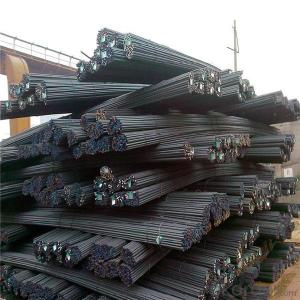Deformed steel bar 12mm of different grade
- Loading Port:
- China main port
- Payment Terms:
- TT OR LC
- Min Order Qty:
- 100 m.t.
- Supply Capability:
- 19000 m.t./month
OKorder Service Pledge
OKorder Financial Service
You Might Also Like
Item specifice
Rebar (short for reinforcing bar), also known as reinforcing steel, reinforcement steel, is a steel bar or mesh of steel wires used as a tension device in reinforced concrete and reinforced masonry structures to strengthen and hold the concrete in tension. Rebar's surface is often patterned to form a better bond with the concrete.
.Most grades of steel used in rebar cannot accept welding; such as, to adjacent steel plates or as means to bind single
pieces of rebar together. However, special grades of rebar steel and welding rods make welding by expert welders possible.
Features
1、Pure steel quality, stable chemical contents, small tolerance.
2、Constant Quality, good drawing performance.
3、High dimension accuracy degree, accuracy degree of Level C up to 80%, smooth surface, less scale, easy to be pickled.
4、Automatic bundling with 4 lines by Machine in tidy and good looks
5、Big high quality percentage, small coil percentage, and heavy coil weight for Hard Coil.
6、High sorbitizing percentage.
Product Description :
Chemical composition (%): | Steel | C | Si | Mn | P | S | Ceq | ||||
HRB335 |
0.25 |
0.80 |
1.60 |
0.045 |
0.045 | 0.52 | |||||
HRB400 | 0.54 | ||||||||||
HRB500 | 0.55 | ||||||||||
Mechanical properties | Steel | Rel/ MPa | Rm/ MPa | A/ % | Agt/ % | ||||||
≥ | |||||||||||
HRB335 | 335 | 455 | 17 |
7.5 | |||||||
HRB400 | 400 | 540 | 16 | ||||||||
HRB500 | 500 | 630 | 15 | ||||||||
Package: | Standard export packing or as customer's request | ||||||||||
Application: | Construction, building, bridge, road. ect | ||||||||||
Payment terms | 1).100% irrevocable L/C at sight. | ||||||||||
Delivery time | 15-30 days after receipt of L/C or deposit by T/T | ||||||||||
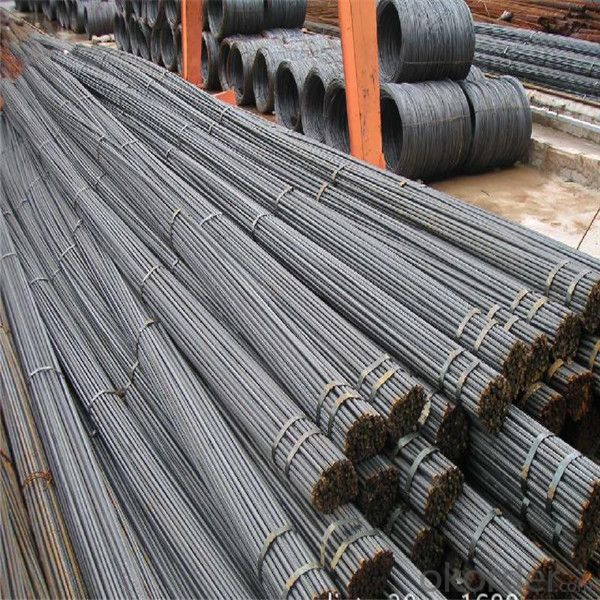
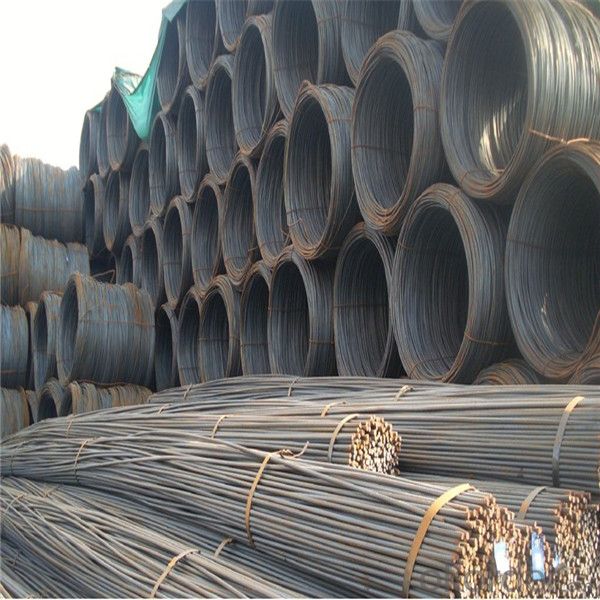
Packing:
In bundles, each bundle weight 3.5 tons. Load by container or by bulk verssel.
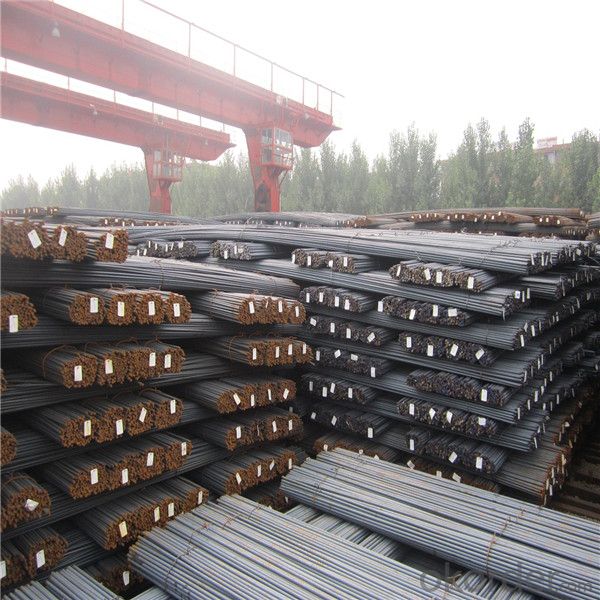
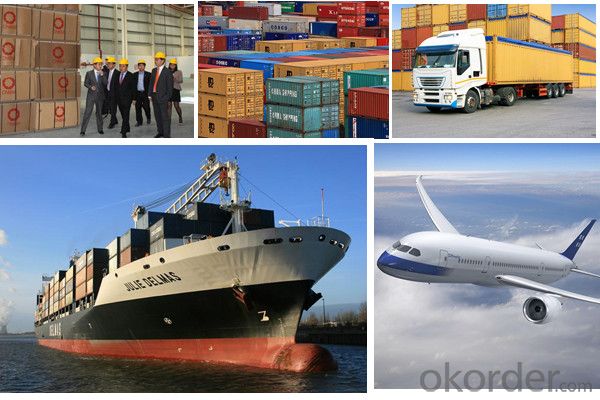
Our service
(1) We cooperate with famous factories with advanced equipment and well trained workers.
(2) We can provide factory price with trading company service.
(3) We continuously work on the improvement of our processes, guaranteeing consistently high standards
of quality to keep none compensation.
(4) We guarantee 24 hours response and 48 hours solution providing service.
(5) We accept small order quantity before formal cooperation.
(6) We deliver the agreed quality at the agreed time, reacting to changes in customer wishes in a flexible way.
(7) Due to our volume and selling power, we have excellent freight rates with shipping lines.
(8) We strive to always be fair and honest in our dealings with customers.
(9) We strive to work together with customers to achieve much more than we can achieve alone.
(10) Through our passion and commitment we aim to be a market leader in all our key markets. To maintain
our position as market leader we must continue to add value in all that we do.
FAQ:
1.Q: What's your MOQ(minimum order quantity)?
A: One full container, mixed acceptable .
2. Q: What's your packing methods?
A: Packed in bundle or bulk ..
3. Q: How can I buy CNBM products in my country?
A:Please send us an inquiry or email ,we will reply to you if there is distributor in your country
4. Q: Can we visit your factory?
A: Warmly welcome. Once we have your schedule, we will arrange the professional sales team to follow up your case.
5. Q: How long does it take to get the product if i place an order?
A:With the process of your requirements,we will pack and deliver in 3-7 days. If it is by sea shipment,it will take 15-45 days depending on different locations
- Q:How do steel rebars affect the seismic performance of a structure?
- Steel rebars have a significant impact on the seismic performance of a structure. The primary role of steel rebars is to reinforce concrete and enhance its strength and ductility. This reinforcement plays a crucial role in mitigating the damaging effects of seismic activity. During an earthquake, a structure experiences various forces, such as lateral forces, shear forces, and bending moments. These forces can cause the structure to deform, crack, or even collapse. However, steel rebars provide resistance against these forces and help maintain the integrity of the structure. The presence of steel rebars increases the tensile strength of concrete, which is otherwise weak in tension. This enhanced tensile strength allows the structure to better withstand the lateral movement induced by seismic waves. By distributing the forces more evenly, the rebars help to reduce the formation and propagation of cracks, limiting the potential for structural failure. Moreover, steel rebars increase the ductility of the structure. Ductility refers to the ability of a material to undergo deformation without breaking. During an earthquake, the ground shaking can cause the structure to deform and oscillate. Steel rebars allow the structure to absorb and dissipate energy, reducing the likelihood of sudden failure. This ductile behavior is crucial in earthquake-prone regions as it provides warning signs of potential structural distress, allowing occupants to evacuate safely. Furthermore, steel rebars can be strategically placed in critical areas of a structure, such as the beam-column joints, which are highly vulnerable during seismic events. The proper detailing and configuration of rebars in these areas can significantly improve the seismic performance by strengthening the connections and preventing premature failure. In summary, steel rebars play a crucial role in enhancing the seismic performance of a structure. They increase the tensile strength of concrete, improve ductility, reduce crack formation, and strengthen critical areas. These factors collectively contribute to a more resilient structure that can better withstand and absorb the forces generated during an earthquake, ultimately ensuring the safety and stability of the building and its occupants.
- Q:Can steel rebars be bent without compromising their strength?
- Yes, steel rebars can be bent without compromising their strength if done within their specified bending limits and with proper techniques.
- Q:Are there any limitations on using steel rebars in cold climates?
- Using steel rebars in cold climates comes with certain limitations. The primary concern is the possibility of corrosion caused by moisture, salt, and de-icing chemicals commonly applied to roads and bridges during winter. Exposure to these elements can lead to rusting and gradual weakening of steel rebars, compromising the concrete's structural integrity. To address this issue, there are several measures that can be taken. One common approach is the use of epoxy-coated rebars, which offer protection against moisture and chemicals. Another option is to utilize stainless steel rebars, as they have high resistance to corrosion. However, it is worth noting that these alternatives can be more expensive compared to traditional steel rebars. Additionally, the construction process in cold climates presents its own set of challenges. Low temperatures result in slower curing and strengthening of concrete, which can affect the overall project timeline. To ensure proper curing, special precautions such as heating the concrete or using accelerators may be necessary. To guarantee compliance and safety, it is crucial to consult local building codes and regulations that are specific to cold climates. Seeking guidance from engineering professionals experienced in cold weather construction practices can provide valuable insights and recommendations to address the limitations associated with using steel rebars in these conditions.
- Q:How do steel rebars help in distributing load in a structure?
- Playing a crucial role in the distribution of load within a structure, steel rebars, also known as reinforcement bars, are of utmost importance. Their primary purpose lies in reinforcing concrete structures, elevating their strength and durability. Strategically positioned within the concrete, rebars effectively counteract any tensile forces that the structure may face. Although concrete possesses strength in compression, it lacks the same strength in tension. Under the application of a load, such as in a building or a bridge, tensile forces arise, causing concrete to crack and eventually fail. By incorporating steel rebars into the concrete, these tensile forces are efficiently disseminated and transferred to the rebars, preventing excessive deflection or collapse of the structure. The inclusion of steel rebars within the concrete creates a composite material, amalgamating the compressive strength of concrete with the superior tensile strength of steel. Consequently, the structure becomes capable of withstanding a wide range of loads, including dead loads (the weight of the structure itself), live loads (such as occupants or furniture), and environmental loads (such as wind or earthquakes). Moreover, rebars serve the purpose of controlling and minimizing the propagation of cracks within the concrete. When a crack forms under load, rebars act as a barrier, impeding the crack's further spread and safeguarding the structure's integrity. This hinders the development of larger cracks that could potentially lead to structural failure. Furthermore, steel rebars provide stability and reinforcement at critical points within the structure, such as corners, joints, and areas prone to high stress. By reinforcing these vulnerable areas, rebars ensure that the load is evenly distributed throughout the structure, reducing the risk of localized failures. In conclusion, steel rebars are indispensable in distributing load within a structure by absorbing tensile forces, strengthening concrete, preventing crack propagation, and reinforcing critical locations. They significantly contribute to the overall structural integrity and safety, solidifying their vital role in construction projects.
- Q:Can steel rebars be used in wind turbine tower construction?
- Yes, steel rebars can be used in wind turbine tower construction. Steel rebars are commonly used in the construction industry as reinforcement in concrete structures. In the case of wind turbine towers, the foundation and tower structure are usually made of reinforced concrete. Steel rebars help to increase the strength and durability of the concrete, making it capable of withstanding the loads and forces exerted by the wind turbine. The rebars provide reinforcement to the concrete and help in distributing the loads evenly throughout the tower structure, ensuring its stability and structural integrity. Therefore, steel rebars play a critical role in wind turbine tower construction and are commonly used in this application.
- Q:What is the impact of steel rebars on the carbon footprint of a structure?
- The carbon footprint of a structure is greatly affected by the utilization of steel rebars in construction. Steel production is widely recognized as a carbon-intensive process, leading to the emission of greenhouse gases and contributing to climate change. The extraction and processing of iron ore, in addition to the energy-intensive procedures involved in transforming it into steel, generate substantial amounts of carbon dioxide (CO2). Commonly employed to reinforce concrete structures like buildings, bridges, and highways, steel rebars play a significant role in the carbon emissions associated with a structure. The manufacture of cement, a crucial constituent of concrete, also serves as a major source of carbon emissions. Consequently, both steel production and concrete manufacturing processes influence the carbon footprint of a structure. Nevertheless, it is important to acknowledge the potential positive impact of steel rebars on a structure's carbon footprint. Steel possesses exceptional durability and can outlast the structure itself. This longevity diminishes the necessity for frequent maintenance, repairs, and replacements, which would otherwise consume additional resources and emit more carbon. Furthermore, steel rebars enhance the structural strength and resilience of a building, enabling it to withstand extreme weather events and seismic activities. This heightened durability prolongs the lifespan of the structure, reducing the requirement for new construction and the associated carbon emissions in the long term. Efforts are being made to mitigate the carbon footprint of steel rebars by enhancing the efficiency of steel production processes. This includes the adoption of cleaner technologies and the utilization of recycled steel. Additionally, there is a growing inclination towards incorporating sustainable materials such as bamboo or fiber-reinforced polymers as alternatives to steel rebars in construction. To conclude, although the production of steel rebars generates a substantial carbon footprint, their use in construction can contribute to the overall sustainability of a structure by providing durability and diminishing the need for frequent replacements. However, it is crucial to consistently explore and implement more sustainable alternatives to steel rebars in order to further minimize the carbon impact of construction.
- Q:What is the role of steel rebars in foundation slabs?
- Steel rebars play a crucial role in foundation slabs as they provide reinforcement and strength to the concrete. The rebars are strategically placed within the slab to distribute and withstand the load and stresses that the foundation may experience. This helps prevent cracks, increase durability, and enhance the overall structural integrity of the foundation slab.
- Q:Are there any environmental concerns related to steel rebars?
- Yes, there are some environmental concerns related to steel rebars. The production of steel requires significant amounts of energy and releases carbon dioxide emissions, contributing to climate change. Additionally, the extraction of iron ore and other raw materials for steel production can cause habitat destruction and depletion of natural resources. However, steel rebars are also highly recyclable, reducing the need for new steel production and minimizing environmental impact.
- Q:Are steel rebars available in different shapes and profiles?
- Steel rebars are available in a variety of shapes and profiles, not just the plain round bar. The plain round bar is circular and smooth, but there are also deformed bars with ribs or indentations along their length. These ribs improve the adhesion between the rebars and the surrounding concrete, making the structure stronger and more stable. Steel rebars can be found in different sizes and lengths to meet different construction needs. Square bars, flat bars, and T-shaped bars are examples of other profiles available. These different shapes and profiles give engineers and builders the flexibility to choose the most suitable type of steel rebar for their specific construction projects.
- Q:What are the guidelines for the proper storage of steel rebars on construction sites?
- Ensuring the integrity and safety of steel rebars on construction sites is of utmost importance. To achieve this, the following recommendations should be followed: 1. It is crucial to select a suitable storage area for steel rebars. This entails choosing a flat, stable, and well-drained location, while avoiding areas that are prone to flooding or excessive moisture. 2. Ample space should be provided between rebars to prevent any contact or entanglement that could potentially cause damage. Additionally, clear aisles and pathways should be maintained to facilitate easy access and movement. 3. The protection of steel rebars against corrosion is essential. To achieve this, they should be covered with waterproof and UV-resistant tarpaulins or plastic sheets. This shielding will safeguard the rebars from rain, snow, or direct sunlight. 4. To prevent contact with water, dirt, or other contaminants that can accelerate corrosion, it is imperative to elevate the rebars from the ground. This can be accomplished by placing them on wooden supports or pallets. 5. When stacking rebars, it is important to ensure stability and prevent rolling or falling. Larger and heavier rebars should be positioned at the bottom of the stack to create a secure foundation. 6. Each stack should be clearly labeled with information such as size, length, and grade. This will facilitate easy identification. Furthermore, separating different sizes or types of rebars in the storage area will minimize confusion and aid in retrieval. 7. Regular inspections should be conducted to check for signs of corrosion, damage, or deformation. Any rebars showing signs of deterioration should be promptly removed to prevent accidents or compromised structural integrity. 8. When moving or transporting rebars, appropriate lifting equipment such as cranes, forklifts, or hoists should be used. Avoiding dragging or dropping the rebars is crucial, as it can cause deformation or damage. 9. It is vital to consult the manufacturer's guidelines for specific storage requirements and recommended practices pertaining to the particular type of steel rebars being used. By adhering to these guidelines, construction sites can ensure the proper storage of steel rebars. This, in turn, will help maintain their quality, prolong their lifespan, and guarantee the safety of both workers and structures.
1. Manufacturer Overview |
|
|---|---|
| Location | |
| Year Established | |
| Annual Output Value | |
| Main Markets | |
| Company Certifications | |
2. Manufacturer Certificates |
|
|---|---|
| a) Certification Name | |
| Range | |
| Reference | |
| Validity Period | |
3. Manufacturer Capability |
|
|---|---|
| a)Trade Capacity | |
| Nearest Port | |
| Export Percentage | |
| No.of Employees in Trade Department | |
| Language Spoken: | |
| b)Factory Information | |
| Factory Size: | |
| No. of Production Lines | |
| Contract Manufacturing | |
| Product Price Range | |
Send your message to us
Deformed steel bar 12mm of different grade
- Loading Port:
- China main port
- Payment Terms:
- TT OR LC
- Min Order Qty:
- 100 m.t.
- Supply Capability:
- 19000 m.t./month
OKorder Service Pledge
OKorder Financial Service
Similar products
New products
Hot products
Related keywords
